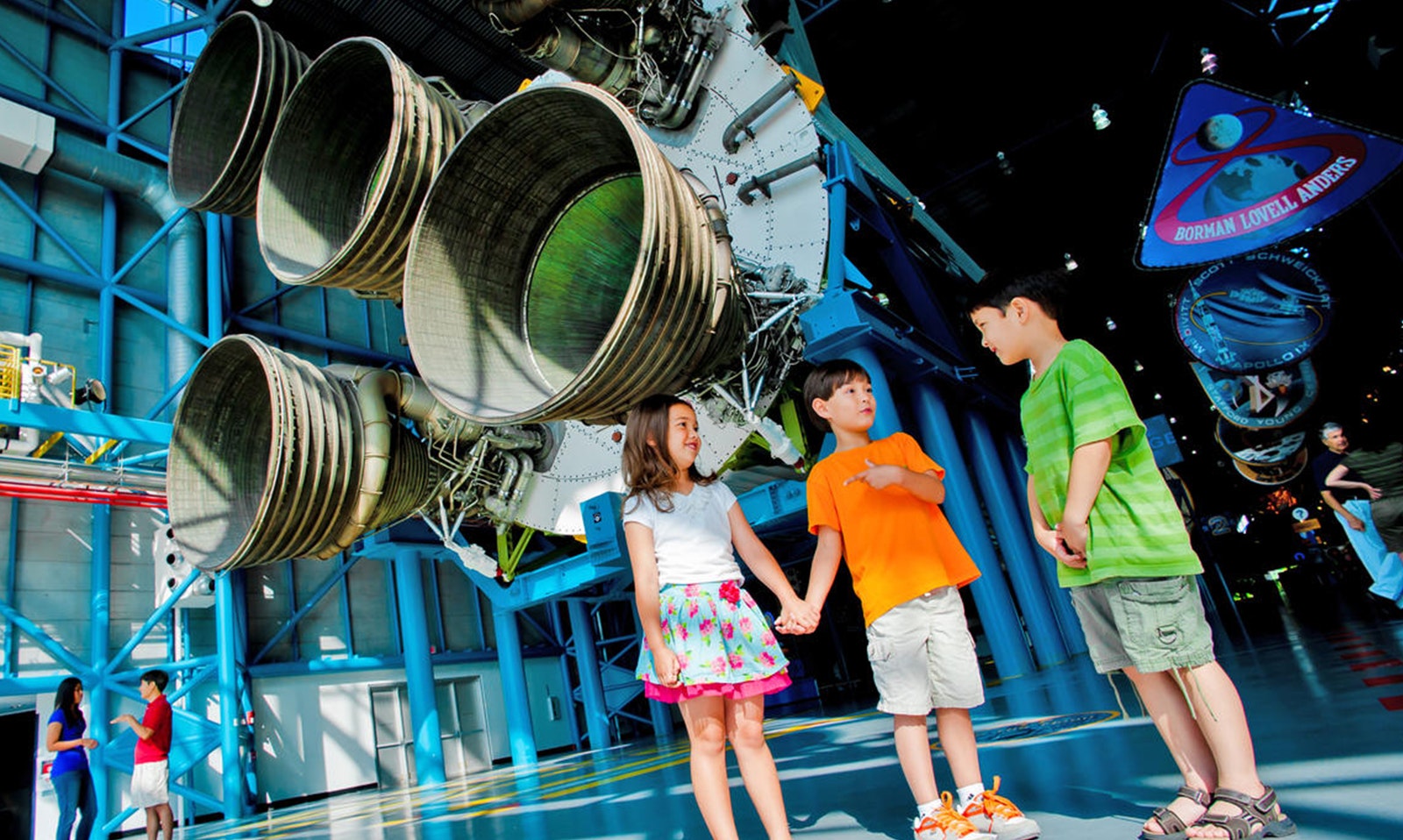Saturn V Rocket at the Kennedy Space Center is the largest and most powerful rocket ever built, standing tall at a height of 363 feet (111 meters) and weighing 6.6 million pounds (3 million kilograms) when fully fueled. Built by the National Aeronautics and Space Administration (NASA) for the human exploration of the Moon, the Saturn V Rocket is now a must-visit tourist attraction at the Kennedy Space Center, Florida.
Quick facts
- Official name: Saturn V
- Origin country: The United States of America
- Date of completion: 1967
- Project cost: $6.417 million (in 1964-1973 dollars)
- Current status: Retired
- First launch date: November 9, 1967
- Last launch date: May 14, 1973
- Total launches: 13 (Apollo: 12 | Skylab: 1)
- Successes: 13
- Failures: 0
What is the Saturn V Rocket?

Standing proud at 60 feet, taller than the Statue of Liberty, the Saturn V rocket is the largest rocket to have ever flown through space. Built to carry humans to space for Moon explorations, the Saturn V rocket was used to launch 13 missions, including the Apollo 11 mission that landed Neil Armstrong and Buzz Aldrin on the Moon.
Why is the Saturn V Rocket famous?
- It was the largest and most powerful rocket ever built and successfully flown to space.
- It was the first rocket developed under the Apollo program to send humans to the Moon.
- The success of Saturn V established America’s supremacy in space explorations.
- Saturn V was used to launch Skylab, USA’s first space station, into Earth’s orbit.
- The Saturn V rocket at the Kennedy Space Center takes you back in time, giving visitors a peek into the history of its making, the launch into space, landing astronauts on the Moon and their safe return back to Earth.
History of the Saturn V Rocket
The restored Space V rocket at the Kennedy Space Center Visitor’s Complex is an interthe Kennedy Space Center Visitor’s Complexactive exhibit which opened on December 17, 1996 in honor of the astronauts, crew members and the 400,000 people who helped build the masterpiece.
A few other exhibits alongside include:
Saturn V Rocket missions
One of the three types of Saturn rockets built by NASA, the Saturn V rocket was developed at NASA's Marshall Space Flight Center in Huntsville, Ala. Two smaller rockets, Saturn I (1) and IB (1b) were used to launch humans into the Earth’s orbit, while the Saturn V rocket took them beyond, to the Moon.
Timeline
-
1968
Apollo 8 [December]
The first crewed Saturn V rocket where astronauts orbited the Moon but did not land.
-
1969
Apollo 9 [March]
The Apollo Moon lander was tested by flying it in the Earth’s orbit.
Apollo 10 [May]
The Saturn V launched the lunar lander to the Moon.
Apollo 11 [July]
The first mission to land astronauts on the Moon in 1969.
Apollo 12 [November]
The second successeful human landing on the Moon.
-
1970
Apollo 13
Crew was lifted into space but didn’t land on the Moon.
-
1971
Apollo 14 [January]
The third successeful human landing on the Moon and the first to land in the lunar highlands.
Apollo 15 [July]
The fourth successeful human landing on the Moon.
-
1972
Apollo 16 [April]
The fifth successeful human landing on the Moon.
Apollo 17 [December]
The sixth successeful and the last human landing on the Moon. Eugene Cernan and Harrison Schmitt were the last humans to walk on the Moon.
-
1973
Skylab Space Station [May]
The last Saturn V rocket launched Skylab Space Station into space, uncrewed.
Is the Saturn V Rocket worth seeing?

Yes, it definitely is! The Kennedy Space Center has carefully preserved the Saturn V rocket in celebration of the astronauts, crew members, engineers and the 400,000 people who helped build this gigantic marvel of engineering. Visitors can walk beneath the gigantic rocket to feel its enormity and appreciate the technology that went behind designing it.
There are several engaging and interactive exhibits that allow visitors to experience the thrill of the launch, the technology that kept the astronauts safe, the Moon landing and their safe return back to Earth.
Recommended Kennedy Space Center tickets


